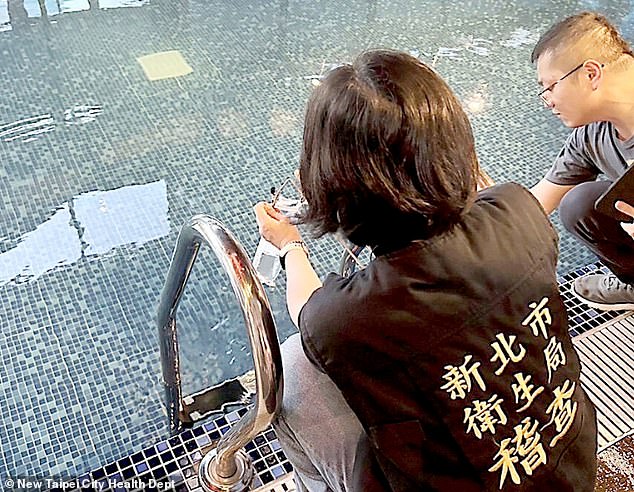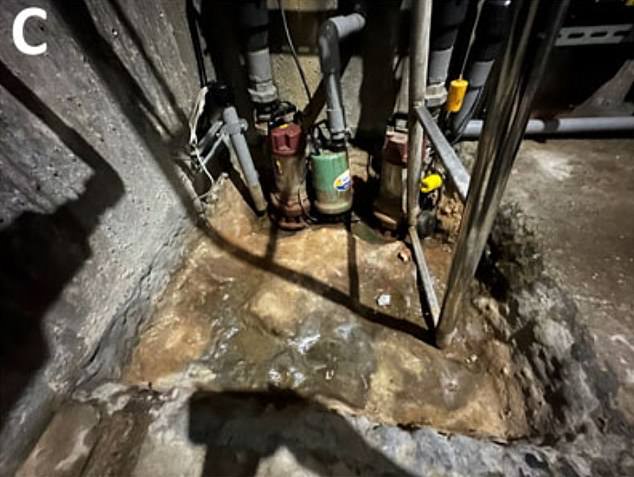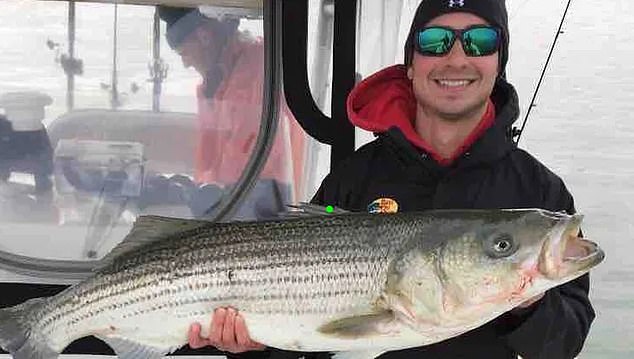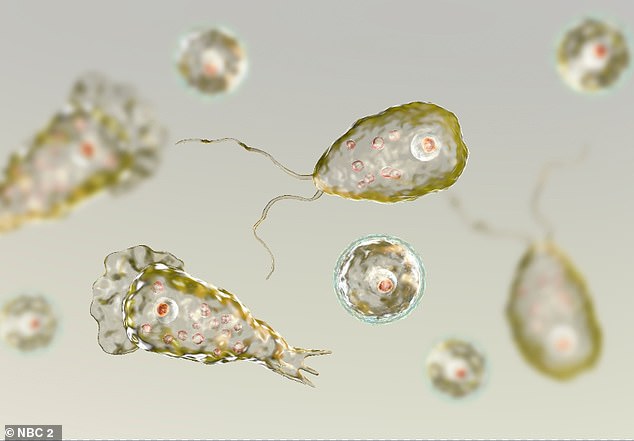Woman, 30, dies from brain-eating amoeba after contracting infection in indoor pool
A young woman has died after contracting a brain-eating amoeba at an indoor swimming pool.
The 30-year-old is said to have contracted the bacteria Naegleria fowleri in a wave pool in Taiwan. This bacteria is fatal in 97 percent of cases.
It is thought that she was learning to surf when water entered her nose, the main way people become infected with the amoeba.
The woman was taken to hospital after suffering from seizures, headaches, fever and stiffness in the neck and shoulders. She died three days later.
This comes after a 29-year-old American man also died from the amoeba in 2018 after visiting a wave pool at a water park in Texas.
The 30-year-old woman is believed to have contracted N. fowleri in an indoor swimming pool (above you can see the tests being performed)

Tests found the amoeba in the pool’s basement, which officials said could have been caused by a leak from pipes.

Above is the water pool in the basement, near the pool’s filtration and chlorination equipment, where N. fowleri was found
Tests showed she had an amoeba infection. Follow-up tests at the center showed there was not enough chlorine in the water to kill the pathogen.
Further investigation revealed that the pathogen was in a pool in the center’s basement. Health officials said the pathogen could easily have spread to the pools on staff boots.
N. fowleri lives in warm fresh water and can infect humans when water is flushed up the nose, allowing the bacteria to infect the olfactory nerve and travel along that nerve to the brain, where it kills tissue and causes swelling that leads to death.
The patient had visited the New Taipei City indoor water park in northern Taiwan before contracting the infection in July 2023.
In the US, fewer than ten cases of the amoeba are recorded each year. These cases are usually associated with swimming in warm fresh water.
But in 2018, a 29-year-old man in Texas also died from the brain-eating amoeba after visiting a surf pool and becoming infected.
Fabrizio Stabile, from New Jersey, died just one day after his infection was diagnosed. He had visited BSR Cable Park.
Of the 135 people infected in the US, only four have survived, and in some cases they have suffered severe brain damage.

In 2018, American man Fabrizio Stabile died after contracting the amoeba in an indoor swimming pool in Texas. He had also used a wave pool

N. fowleri kills about 99 percent of everyone it infects, and is deadly because it quickly spreads to the brain and begins killing tissue
In the case report, published monthly in the CDC’s journal Emerging Infectious Diseases, health officials wrote: “For beginning surfers, it may be difficult to maintain balance in the water and water may rush up their nose if they fall into the waves.”
They added that chlorine levels in the main pool, which supplied water to the wave pool, were already low and that they were likely ‘even lower’ in this pool.
After discovering the case, authorities contacted 12 employees and 630 customers who had visited the center around the same time. However, none reported symptoms of N. fowleri infection.
It is not clear how the woman became infected, but authorities believe the swimming pool is the most likely source.
Of the 56 samples taken from the pool, only one tested positive for N. fowleri. It was from a puddle in the basement under the ladder leading to the chlorine tanks.
Experts suspected that this pool came from a leak in the water system, which could indicate that the pool was contaminated with N. fowleri.
But they also said it was possible that workers had stepped into the puddle and carried the N. fowleri to the edge of the pool, where it would have entered the water.
Separate tests showed that the chlorine level in the main pool was about 0.87 ppm, well below the one to three ppm needed to kill microbes.
Because this water entered the wave pool, authorities feared that water levels in this area could be even lower.
Staff at the center in New Taipei City, in northern Taiwan, said they change all the water in the facility every two to three months.
They also add chlorine to the pools daily and test the water, but no data on the results has been released.
